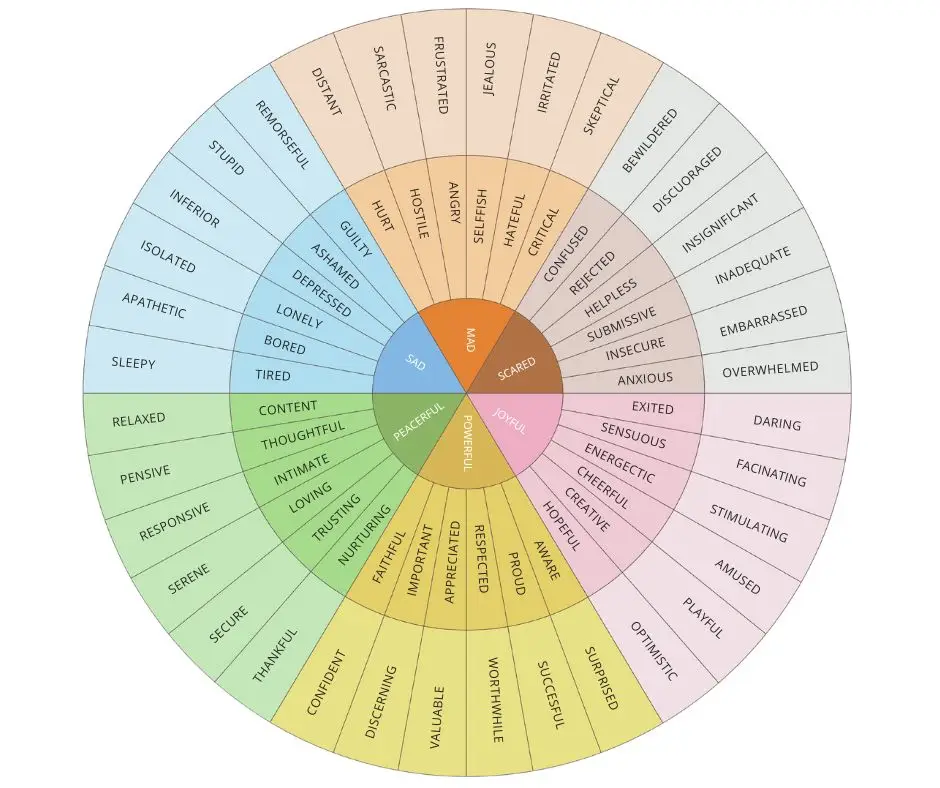Have you ever found yourself feeling overwhelmed by emotions but not really sure what exactly you were feeling? Maybe you’ve been in a situation where you knew you were upset, but you couldn’t quite put your finger on why. Or maybe you’ve tried to explain your feelings to someone, only to end up saying, ‘I don’t know, I’m just… mad!’”
Feeling our Feelings
Sometimes, we experience emotions so intense that we know exactly what we’re feeling. But at other times, our emotions are more subtle—buried deep, quiet, and difficult to pinpoint. These feelings often hold the key to deeper insights about ourselves. They can reveal unresolved issues, unmet needs, or hidden desires that influence our behaviour and well-being. By bringing these quiet emotions to the surface, we can address them, heal, and ultimately grow.
How did we become so disconnected from our own feelings?
The truth is, this emotional disconnection didn’t happen overnight. It’s the result of a complex mix of cultural, societal, and personal factors that have shaped the way we understand—and often misunderstand—our emotions.
- Our culture and society play a big role.
Many cultures view certain emotions as negative or weak, leading to their suppression. Traditional gender roles also play a part, teaching men to hide vulnerability and women to avoid anger, which can diminish emotional awareness. - How we were raised also has a significant impact.
Growing up in environments where emotions are invalidated or dismissed can teach people to ignore their feelings. Without proper emotional education, many struggle to identify or express their emotions. - Our modern lifestyle and constant technology use doesn’t help either.
Constant distractions from technology and the push for productivity can cause people to overlook their emotions, further disconnecting them from their inner selves. - Stress and trauma can lead to emotional shutdown.
Stress or trauma can lead to emotional shutdown as a protective mechanism, making it harder to recognize or process feelings. - Limited emotional vocabulary can keep us from connecting with our feelings.
Limited language for emotions restricts our ability to identify and understand what we’re feeling. - The fear of being vulnerable often holds us back.
The risk of rejection or judgement can make people hesitant to acknowledge or express their emotions, leading to further disconnection.
So what can we do about it?
Did you know that there’s a tool that can help you untangle those emotions, name them, and even understand them better?
Today, we’re diving into the feelings wheel—a simple yet powerful tool that can transform how you understand and communicate your emotions. Whether you’re looking to improve your emotional intelligence, have better conversations, or just get a little more in touch with yourself, the feelings wheel might be just what you need. So, let’s explore why this tool is so valuable and how you can start using it today.
The Feelings Wheel
Most people can easily identify the core emotions. If you find yourself stuck on a general feeling, like ‘anger,’ but can’t pinpoint the exact emotion, the feelings wheel can help you drill deeper. By using the wheel, you can explore the nuances of that anger—whether it’s frustration, irritation, or something else entirely—giving you a clearer understanding of what you’re truly experiencing.
The feelings wheel, developed by Dr. Gloria Willcox, is a circular diagram that organises emotions into categories, ranging from broad primary emotions in the centre to more specific secondary and tertiary emotions as you move outward. This structure helps in breaking down complex feelings into identifiable parts, making it easier to understand and articulate what you’re experiencing.
4 reasons to try using the Feelings Wheel:
- The feelings wheel is a great way to get more in touch with your emotions.
Instead of just feeling “happy” or “sad,” the wheel helps you zero in on exactly what you’re experiencing. A lot of us struggle to put our feelings into words, and that can lead to misunderstandings both with ourselves and others. - Using the wheel can also make communication a lot easier.
When you can name your emotions more precisely, it’s simpler to explain how you’re feeling. Instead of just saying, “I’m upset,” you can share whether you’re “disappointed” or “frustrated,” which can really help improve conversations—especially with the people you care about. - Recognizing your specific emotions can help you manage them better.
If you know you’re feeling “anxious,” for example, you can take steps to calm down before it gets too overwhelming. This helps you respond more thoughtfully, instead of reacting on impulse. - Using the feelings wheel regularly can be a real boost for personal growth.
It encourages you to understand your emotions on a deeper level, which can increase your emotional intelligence over time. This kind of awareness makes you more resilient and better equipped to handle life’s ups and downs.

How to Use the Feelings Wheel in 5 steps
- Identify the Core Emotion:
Ask yourself which core emotion best represents what you’re feeling. Start with the centre of the wheel, where basic emotions like “joyful”, “Scared”, “Sad” or “Peaceful” are located. - Move to the Outer Layers:
Once you’ve pinpointed the core emotion, follow it outward to the more specific feelings. For example, if you’re feeling “mad,” you might move to the next layer and identify whether it’s more about “frustration,” “irritation,” or “hurt.” The outermost layer provides even more nuanced emotions. From “frustration,” you might discover you’re feeling “let down” or “bitter.” - Reflect on Your Findings:
Take a moment to think about the specific emotion you’ve identified. What triggered it? How is it affecting you? What do you need to do to deal with it in a healthy way? You might find it helpful to journal your thoughts or talk them over with a trusted friend or therapist. - Use It Regularly:
Try making the feelings wheel a regular part of your routine. Whether you check in with it daily or just during emotionally charged moments, it can help you stay in tune with your emotional health. - Integrate into Conversations:
Consider using the feelings wheel when talking with others, especially in close relationships or therapy sessions. Naming your emotions more accurately can lead to better understanding and deeper connections.
Enjoy the Process
As you explore the feelings wheel and begin incorporating it into your daily routine, remember that emotional awareness is a skill that can be developed with practice. Understanding and managing your emotions is a journey, not a destination. Tools like the feelings wheel can be invaluable in helping you navigate this journey, allowing you to connect more deeply with yourself and others. Give it a try, and notice how your ability to recognize and express your emotions evolves over time. Your emotional well-being is within your control, and every step you take towards greater awareness is a step towards a healthier, more fulfilling life.



